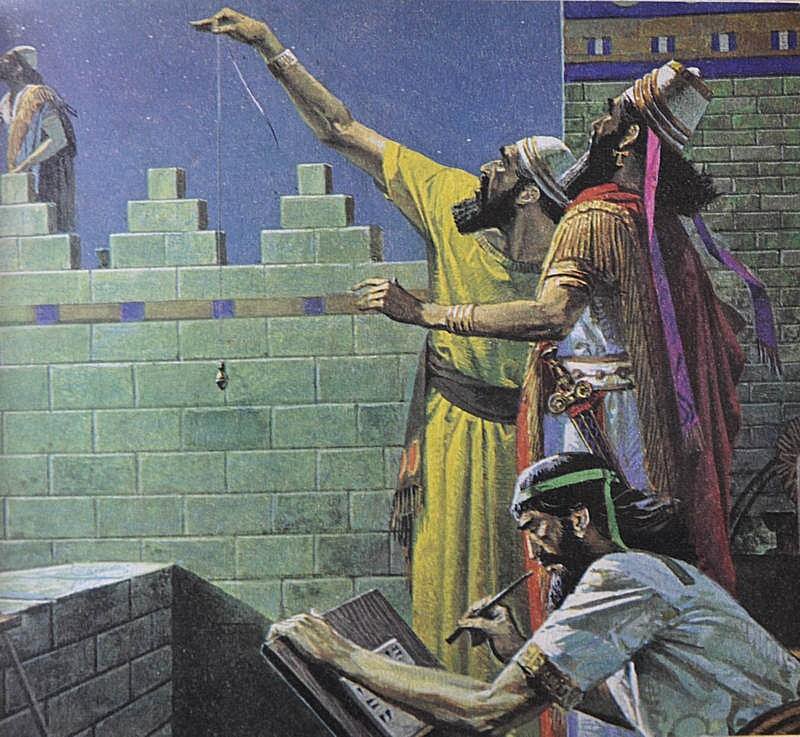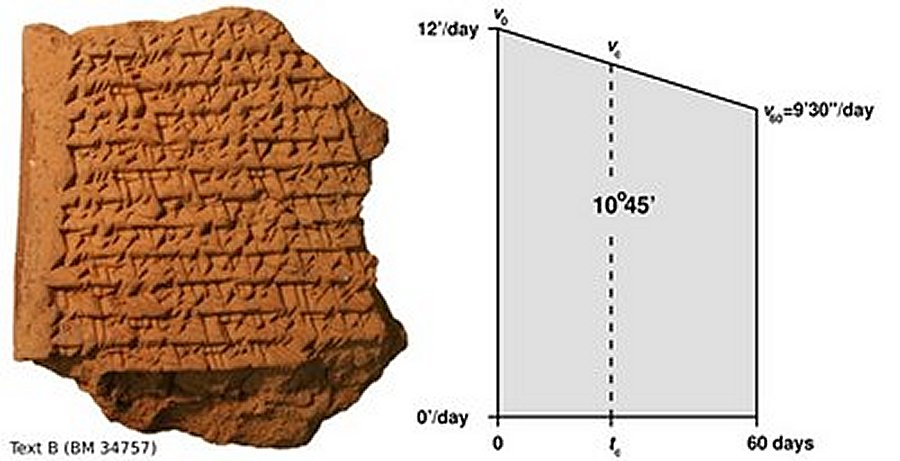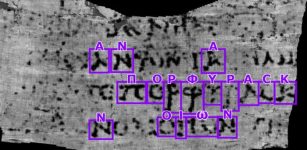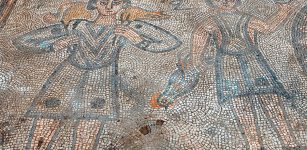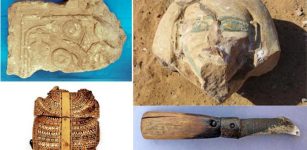Babylonian Astronomers Used Geometry To Track Jupiter – 1,400 Years Before Europeans
AncientPages.com - An analysis of three published and two unpublished cuneiform tablets from the British Museum has revealed that Babylonian astronomers used geometry to calculate the motions of Jupiter - 1,400 years before Europeans.
The discovery was made by Prof. Mathieu Ossendrijver, historian of science of the Humboldt-Universität in Berlin, who translated and interpreted five clay tablets - marked with the tick-shaped imprints of the ancient cuneiform script.
It was assumed that Babylonian astronomers used only arithmetical methods. "The new interpretation reveals that Babylonian astronomers also used geometrical methods"
Dated from the period between 350 and 50 BC, the tablets were excavated in the late nineteenth century and are kept at the British Museum in London.
On four of these tablets the distance covered by Jupiter is computed as the area of a figure that represents how its velocity changes with time. None of the tablets contains drawings but, as Mathieu Ossendrijver explains, the texts describe the figure of which the area is computed as a trapezoid.
"The new interpretation reveals that Babylonian astronomers also used geometrical methods", says Mathieu Ossendrijver.
Two of these so-called trapezoid texts had been known since 1955, but their meaning remained unclear, even after two further tablets with these operations were discovered in recent years.
The new interpretation of the trapezoid texts was now prompted by a newly discovered, almost completely preserved fifth tablet.
Left: Cuneiform tablet with calculations involving a trapezoid. Right: A visualization of trapezoid procedure on the tablet: The distance travelled by Jupiter after 60 days, 10º45', is computed as the area of the trapezoid. The trapezoid is then divided into two smaller ones in order to find the time (tc) in which Jupiter covers half this distance. Figure: Mathieu Ossendrijver (HU)
The new tablet does not mention a trapezoid figure, but it does contain a computation that is mathematically equivalent to the other ones. This computation can be uniquely assigned to the planet Jupiter.
With this new insight the other, thus far incomprehensible tablets could also be deciphered.
In all five tablets, Jupiter's daily displacement and its total displacement along its orbit, both expressed in degrees, are described for the first 60 days after Jupiter becomes visible as a morning star.
"The crucial new insight provided by the new tablet without the geometrical figure is that Jupiter's velocity decreases linearly within the 60 days. Because of the linear decrease a trapezoidal figure emerges if one draws the velocity against time."
"It is this trapezoidal figure of which the area is computed on the other four tablets", says the historian of science.
The area of this figure is explicitly declared to be the distance travelled by Jupiter after 60 days. Moreover, the time when Jupiter covers half this distance is also calculated, by dividing the trapezoid into two smaller ones of equal area.
"These computations anticipate the use of similar techniques by European scholars, but they were carried out at least 14 centuries earlier", says Ossendrijver.
It was previously assumed that the astronomers in Babylon used arithmetical methods but no geometrical ones, even though they were common in Babylonian mathematics since 1800 BC. Ancient Greek astronomers from the time between 350 BC and 150 CE are also known for their use of geometrical methods.
See also:
Our 7-Day Week Can Be Traced To Babylonians Who Started Using It 4,000 Years Ago
Babylonians And Sumerians Had Advanced Knowledge Of Astronomy
Elusive Planet Mercury As Seen Through The Eyes Of Ancient Astronomers
Gnomon: Ancient Time Measuring Instrument Used By Babylonians, Egyptians And Chinese
However, the Babylonian trapezoid texts are distinct from the geometrical calculations of their Greek colleagues. The trapezoid figures do not describe configurations in a real space, but they come about by drawing the velocity of the planet against time. As opposed to the geometrical constructions of the Greek astronomers the Babylonian trapezoid figures exist in an abstract mathematical space, defined by time on the x-axis and velocity on the y-axis.
Previous cuneiform records have suggested that the astronomers predicted where planets would be using arithmetic methods.
Research is published in the current issue of the journal Science.
Written by AncientPages.com
Expand for references
